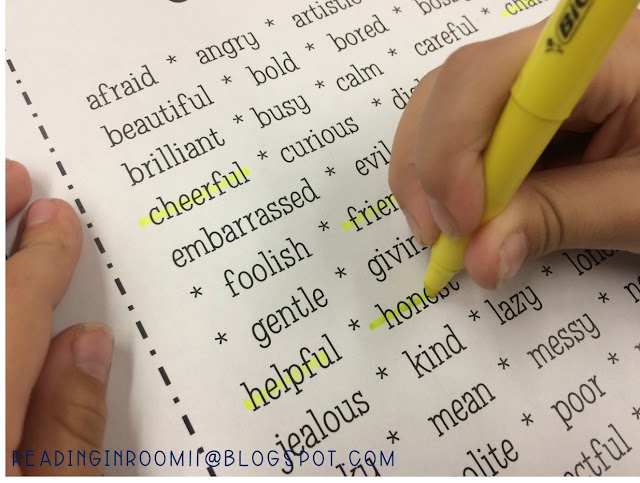
Graphing Success: Preparing for Those State Assessments
It's that time of year again! Testing season is not far away, and we are all getting ready to help our students prepare for the standardized tests. My job as a reading specialist has shifted a little to help students as they work on those all important test taking strategies. This year, I am trying something different.

The Power of One Word
Earlier this year I was intrigued by a blog post from Tammy over at Forever in First. She wrote about the book Moo! After checking it out myself, reading it to my students, watching my students read it over and over, I witnessed the power that one single word (plus punctuation) can have! And this only led to more books...

Exploring Software and Websites to Support Reading Comprehension
As teachers, we look for new ways to present information all...the...time, don't we? Pinterest, blog posts, Facebook, TPT, Instagram, and websites are all sources of help for teachers, and teachers are great at sharing lesson ideas they find. Today, I thought I'd do some sharing too. We have been exploring software and websites to support our kiddos with comprehension, so I'll share a review of what we've learned.

Alphabet Books are for Everyone!
And you thought they were just for the younger crowd! Did you know that children in all grade levels can benefit from lessons learned in various alphabet books? There are so many different alphabet books that serve different purposes and can be used in many different ways.
Posted by
Andrea Crawford

Warm Up with Poetry: Making Your Poem of the Week Valuable
I have done a Poem of the Week for years. The poem helped cover many quick lessons during the introductory week and review lessons in the weeks that followed. The poem of the week were generally chosen or created to integrate another lesson in reading, math, science, or social studies.
More Winter?
More Winter?

A Quick & Easy Way to Teach Character Traits
How many times have you asked a student to describe a character and they start making a list of their eye color, hair color, etc.? Or perhaps they say my all time favorite answer: nice. Here are some ways that you can start getting students to dig deeper!
These resources are available in a free download.
Inside/Outside:
The first step is to explain the difference between inside and outside characteristics. Choose a character and use this template to work through the character traits. Start with the easiest: outside. Students can make a list on the outside of physical characteristics like eye color, hair color, height, or type of animal. Then you can turn your attention to the inside. Word Lists:
The inside characteristics/traits can be difficult for students to come up with independently. You can always give examples from the book.
This great word list is from Colleen at Totally Terrific in Texas.
I love to go through these lists with students and highlight all of the words that might describe the character. Then we go through and choose the words that are the best fit.
I often have students keep a copy of these lists in their folders to refer back to when they are answering questions independently.
Student Character Traits:
Now for my favorite activity - having classmates describe each other. I printed out a list for each student and had them write their name at the top. Then we took turns passing the papers around each student highlighted one positive character trait of that person. We kept passing the paper until everyone highlighted a trait for each student.I took the results and created a wordle for each student. I have also put a student's picture in the middle of a piece of blank paper and students have taken turns writing a positive trait on the paper.
Personal side note: This can be an incredible moving and rewarding activity. I teach small groups of students receiving Tier 2 and 3 support and their confidence is often affected by their academic struggles. I have done this with 1st graders through 5th graders and the results are always heartwarming. I love seeing the looks on their faces as we read the positive things their peers had to say about them!
I hope that you find these ideas helpful to you and your students! Please let me know in the comments if you have any questions or other helpful ways to teach character traits!
Click HERE to download the Inside/Outside Character Trait Printable as well as the word lists.
Pin for later:

Oral Storytelling with Picture Walks
Subscribe to:
Posts (Atom)














